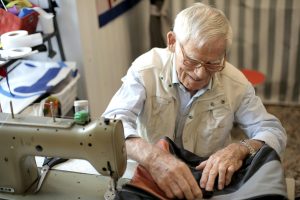How Fashion Brands Tell Stories Through Design
Fashion has always been a form of self-expression, with each individual having a unique sense of style and personality. But beyond that, fashion has the power to tell stories. From the fabric choices to the color palette, every aspect of a garment is carefully thought out and chosen to convey a message. And it is the responsibility of fashion brands to weave these narratives into their designs. In this article, we will explore how fashion brands tell stories through design and why it is an essential aspect of the industry.
The Art of Storytelling in Fashion
Fashion has the ability to transcend mere utilitarian purposes and become a form of art. And storytelling is at the heart of this art. Through design, fashion brands have the opportunity to communicate their values, beliefs, and inspirations to their audience. It allows them to create a deep connection with their customers, making them more than just a clothing brand.
Moreover, storytelling in fashion sets brands apart from their competitors, making them stand out in a saturated market. It enables them to create a unique brand identity and establish a loyal following. By telling stories through their designs, fashion brands can make a lasting impact on their customers, beyond just the physical garments.
The Importance of Design in Fashion Storytelling
Design plays a crucial role in fashion storytelling. From the initial concept to the final product, every design decision is made with storytelling in mind. The fabric, silhouette, and details are all carefully chosen to communicate a specific message. For example, a brand may use sustainable fabrics to showcase their commitment to the environment, or incorporate traditional patterns and techniques to honor a particular culture.
Design also allows fashion brands to be innovative and creative in their storytelling. By experimenting with different materials, techniques, and styles, they can bring their stories to life in a visually impactful way. This not only captivates the audience but also evokes emotions and creates a sense of connection with the brand.
Telling a Story Through Each Collection
One of the most significant ways fashion brands tell stories through design is through their collections. Each collection has a specific theme or concept, and every garment within it is designed to convey that idea. For instance, a brand may draw inspiration from a famous artwork or time period and translate it into their designs. This not only adds depth to the collection but also creates a narrative that customers can relate to.
Moreover, collections allow fashion brands to have a consistent narrative across their pieces. By following a cohesive theme, customers can understand the brand’s identity and values better. It also gives the brand an opportunity to showcase their creativity and storytelling abilities in a more significant way.
Collaborations as a Form of Storytelling
Collaborations have become a popular way for fashion brands to tell stories through design. By teaming up with other brands or artists, they can create something unique that goes beyond their usual aesthetic. Collaborations also allow brands to reach new audiences and tell stories that they may not have been able to on their own.
For example, luxury fashion brand Louis Vuitton collaborated with artist Jeff Koons, creating a collection that featured famous artworks on handbags and accessories. Through this collaboration, the brand was able to tell a story of art and luxury, attracting a diverse audience.
Telling Stories for Social and Cultural Impact
Beyond the world of fashion, many brands use storytelling to bring attention to important social and cultural issues. Through design, they can raise awareness, spark conversations, and drive change. For instance, brands may use their platform to support and promote diversity and inclusivity, body positivity, and sustainability.
Fashion designer Christian Siriano has been at the forefront of bringing diversity to the runway. His designs celebrate different body types, skin colors, and genders, telling the story of inclusivity and representation in fashion. Through his designs, he has inspired other brands to follow suit and make a positive impact on the industry.
In Conclusion
Fashion and storytelling go hand in hand, with each aspect enriching the other. It is through design that fashion brands can tell their stories and connect with their audience on a deeper level. And as fashion continues to evolve, storytelling will remain an integral part of the industry, shaping and influencing the way brands communicate with their customers.
So, the next time you put on your favorite outfit, think about the story behind it. Because in the world of fashion, there is always a story waiting to be told.









